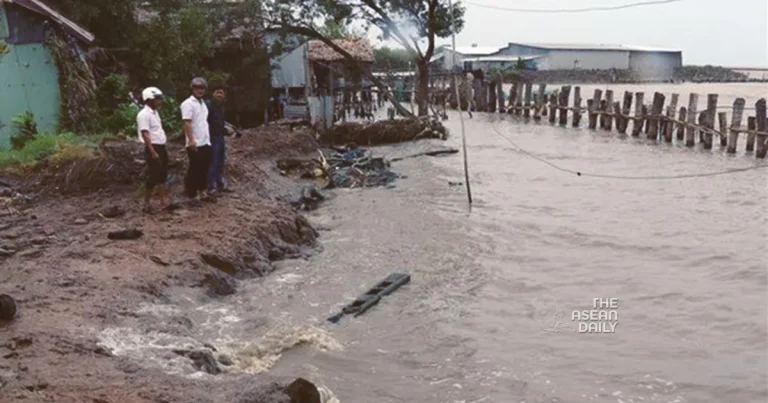22-11-2023 (HANOI) In the picturesque Mekong Delta region of Vietnam, Le Thi Hong Mai woke up one summer morning to find her home collapsing into the river. This unfortunate event highlights the dire consequences of shoreline erosion caused by sand mining and hydropower dams in the area. Hundreds of thousands of people are at risk as the delta region, known as Vietnam’s “rice bowl,” is predicted to run out of sand in just over a decade.
Sand, a crucial resource for concrete production, has become the world’s second most exploited natural resource after water, according to the United Nations Environment Programme. Its use has tripled in the past two decades. However, the rapid depletion of sand reserves is already devastating lives and impacting the local economy in the Mekong Delta.
For 46-year-old Mai, the collapse of her home in the suburbs of Can Tho City meant losing everything, including her small restaurant business. Recalling the incident, she said, “I heard a bang, I rushed out and everything was gone. I have nothing left.” This heartbreaking story is just one example of the devastating effects of the erosion caused by the diminishing riverbed.
A study by the Mekong River Commission in 2018 revealed that by 2040, the sediment in the Mekong could be reduced by up to 97 percent. This reduction will have severe consequences for the people living and working along the riverbanks. The construction of hydropower dams upstream has already restricted the flow of sand to the delta, exacerbating the problem. Additionally, sand mining to meet Vietnam’s construction demands is rapidly depleting the remaining resources, as highlighted in a recent WWF report.
The consequences of these activities are evident as river flows become lighter and faster, resulting in accelerated erosion. Government figures show that between 2016 and August of this year, approximately 750 kilometers of riverbank and nearly 2,000 houses in the Mekong Delta region have sunk into the rivers.
To meet the demand for sand, diggers and boats work non-stop, dredging the riverbed along the Mekong. However, even with these efforts, Vietnam’s Ministry of Transport states that the delta region will be able to provide less than half of the required 54 million cubic meters of sand needed for major national highways before 2025.
The ban on sand exports in all forms since 2017 has not been sufficient to address the issue, as the high domestic demand continues to exceed the downstream supply. At the current extraction rate of 35 to 55 million cubic meters per year, experts predict that there will be no more sand by 2035.
The consequences of this sand crisis are felt by individuals like Diep Thi Lua, who lives in Hau Giang province, 60 kilometers from Mai’s devastated home. Lua experienced the sinking of her front garden into the water in the middle of the night. She described the terrifying event, saying, “We all jumped out of bed after hearing a big noise. We could feel the ground was shaking. We were so, so scared.” Over the decades, the river has widened by dozens of meters, posing a constant threat to the residents.
To combat erosion, the government has invested over US$470 million in more than 190 projects since 2016. However, many of these expensive structures have collapsed into the river, further exacerbating the crisis. The WWF estimates that around half a million households could lose their homes, while the General Department of Natural Disaster Prevention and Control suggests that around 20,000 households are at risk and need to be resettled.
The urgency of the situation is clear, but finding viable solutions is a complex challenge. Resettlement requires significant financial resources that the government lacks. An official from Hau Giang province, who preferred to remain anonymous, shared the grim reality, saying, “We know that they could lose their lives, living in those high-risk areas, but we have no solutions.”
Residents like Mai and Lua are left with a sense of fear and helplessness. Mai expressed her distress, saying, “I have not slept well since the erosion. We have nowhere else to go. We just have to accept it.” The race against time to address the sand crisis and mitigate the devastating effects of erosion continues in Vietnam’s fragile Mekong Delta.




